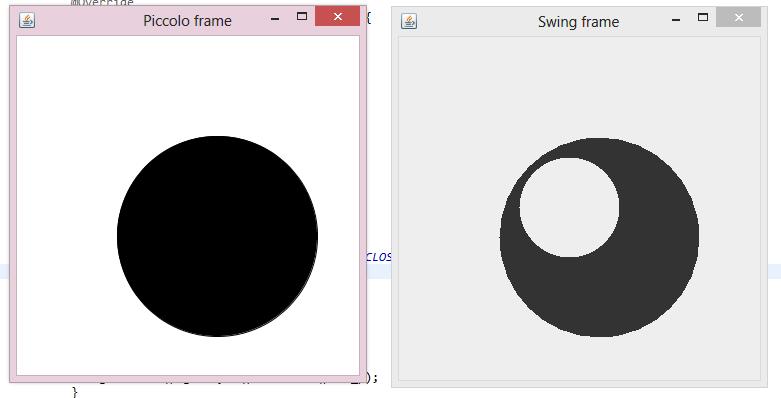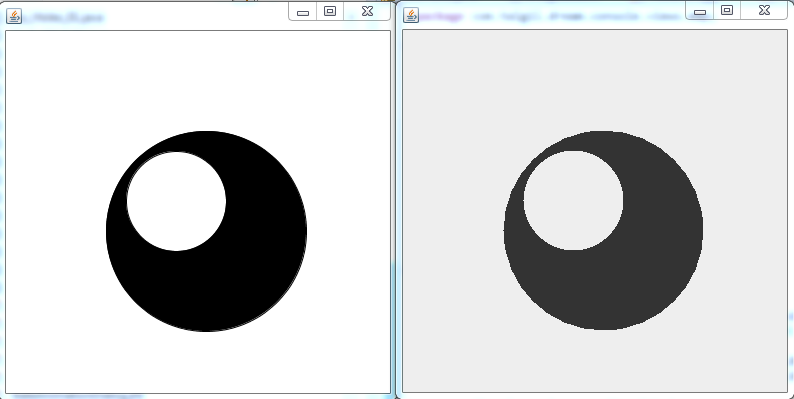如何在Piccolo2D中形成一个形状的洞?
如何在Piccolo2D中形成一个形状的洞?
提问于 2013-10-27 12:30:21
在主Java中,它支持“缠绕规则”,这可能有助于在形状上挖洞。
不幸的是,这个概念在Piccolo2D中被忽略了:
public class Try_Holes_01 {
@SuppressWarnings("serial")
public static void main(String[] args) {
final Path2D path = new Path2D.Double(Path2D.WIND_EVEN_ODD);
//final Path2D path = new Path2D.Double(Path2D.WIND_NON_ZERO);
path.append(new Ellipse2D.Double(100,100,200,200), false);
path.append(new Ellipse2D.Double(120,120,100,100), false);
JPanel panel = new JPanel() {
@Override
protected void paintComponent(Graphics g) {
super.paintComponent(g);
Graphics2D g2 = (Graphics2D) g;
g2.fill(path);
}
};
final PPath path_p = new PPath(path);
path_p.setPaint(Color.BLACK);
JFrame frame = new JFrame();
frame.setLayout(new BorderLayout());
frame.add(panel, BorderLayout.CENTER);
frame.setSize(800, 600);
frame.setLocationRelativeTo(null);
frame.setDefaultCloseOperation(JFrame.EXIT_ON_CLOSE);
frame.setVisible(true);
new PFrame() {
@Override
public void initialize() {
getCanvas().getLayer().addChild(path_p);
}
};
}
}

那么,如何在Piccolo2D路径中挖洞呢?
回答 1
Stack Overflow用户
回答已采纳
发布于 2013-10-27 15:39:26
PPath为其操作维护一个私有GeneralPath成员。它使用WIND_NON_ZERO初始化。幸运的是,可以用PPath.getPathReference()访问它。所以这应该能起作用:
path_p.getPathReference().setWindingRule(Path2D.WIND_EVEN_ODD);结果如下:

页面原文内容由Stack Overflow提供。腾讯云小微IT领域专用引擎提供翻译支持
原文链接:
https://stackoverflow.com/questions/19618041
复制相关文章
相似问题

